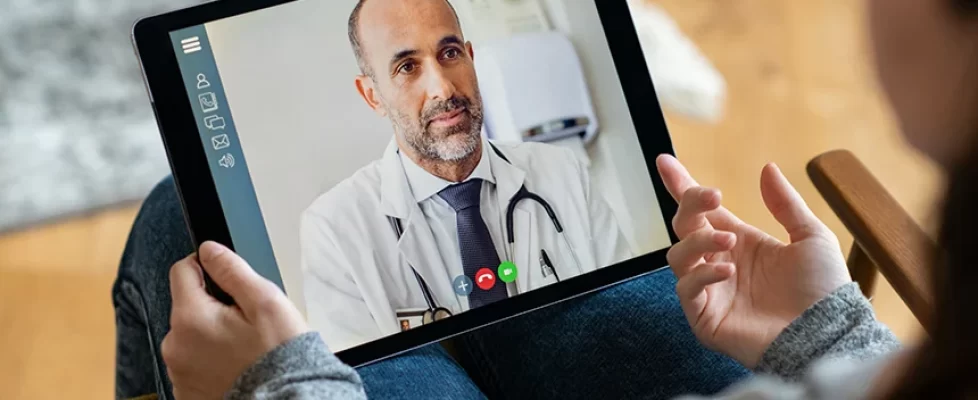The Future of Telemedicine Post-PHE and How to Advocate for Change: An interview with Nathaniel Lacktman
22 December 2022 Health Care Law Today
Author(s): Nathaniel M. Lacktman
Many of the telehealth flexibilities that became popular with both patients and clinicians during the COVID-19 pandemic will expire when the public health emergency (PHE) ends. After three years of operating under these waivers, an abrupt ending to them could cause significant disruption to telemedicine providers and the patients who depend on their care, a concern referred to as the “Telehealth Cliff.” And yet, the threat of the Telehealth Cliff can be solved through simple federal legislation making the waivers permanent, or even a regulatory glidepath easing the transition for patients and providers alike.
In a recent episode of the Blue Cirrus Radio Show, Chair of Foley & Lardner’s national Telemedicine and Digital Health Industry Team, Nathaniel Lacktman, spoke with hosts Joe Coletti and Michelle Hager from Blue Cirrus Consulting about telehealth advocacy, the U.S. Department of Health and Human Services Office of Inspector General (HHS-OIG) Special Fraud Alert on telefraud, and the rise of asynchronous telehealth, among other topics. Mr. Lacktman also serves on the American Telehealth Association (ATA) Board of Directors.
Lacktman described the genesis and mission of ATA Action, an ATA affiliated trade organization that allows for direct advocacy on behalf of the telehealth community to enact legislative change at both the federal and state levels. This last year, ATA Action’s primary efforts have been to help avoid the Telehealth Cliff through education and advocacy to ensure the temporary flexibilities that were put in place during the PHE extend at least through 2023, if not permanently.
“Absent one or two other examples that largely focus on Medicare or national physician licensing writ large, there’s been no comprehensive advocacy organization that focused on creating harmony and consistency for telemedicine laws across the 50 State,” Lacktman said. “We know how telemedicine practice (and many other things in the United Sates) is primarily dictated state by state, if only due to Federalism principles in the Constitution. With ATA Action serving as a single vehicle pushing for such change, stakeholders can accomplish far more together than their efforts individually. Through ATA Action, organizations can help create more homogeneity and standardization in state telemedicine laws nationwide, thereby allowing hospital systems, multistate provider groups, decentralized clinical trial programs, and telemedicine and digital health companies to build and scale their services quicker, cheaper, and with more standardized quality.”
Lacktman went on to explain the formation of various coalitions, in particular one that uplifts the voice and perspective of the patient, to help with this movement.
“Patients are the recipients of our health care services, but traditional health care stakeholders typically do not talk enough about the patient-facing experience. A great way of looking at health care is to ask what do our patients want, what do they care about, and how can we fold those desires into our telehealth services. Some of the brightest digital health companies ask these questions.” – Nathaniel Lacktman
And yet, the need for consistent, updated federal and state telehealth legislation goes beyond avoiding the Telehealth Cliff. In July 2022, HHS-OIG published a Special Fraud Alert about arrangements with telemedicine companies to serve as an extra level of guidance to the industry at large. The alert outlines seven characteristics that could suggest any given arrangement that poses a risk of fraud or abuse. “Anybody entering into telemedicine contracts should take a look at that Special Fraud Alert” Lacktman said, “because it includes factors that may raise eyebrows.”
In the interview, Lacktman distinguishes and explains the differences between telefraud and telehealth fraud. Telefraud refers to traditional kickback scenarios that do not even use technology for meaningful health care services. In contrast, examples of telehealth fraud include providers offering bona fide virtual medical consultations but overbilling the patient, upcoding services, offshoring doctors overseas, or doctors claiming to do an amount of video consults exceeding 24 hours in a single day.
The conversation then shifted to the growth of asynchronous telehealth and the wider use of artificial intelligence (AI) in modern health care. “I’m quite bullish on the future of asynchronous telemedicine, and I think the market has already responded,” Lacktman said. “By building out the patient-facing and physician-facing user experiences in a proper way so as to digitize the essential elements of the doctor-patient relationship, it is possible to achieve quality, efficient medical services performed via asynchronous telemedicine.”
There is a fundamental supply and demand imbalance between the number of people in the United States needing health care and the number of clinicians available to deliver that care. The telemedicine and digital health industry is using technology to try and close that gap. If done deliberately and intentionally, weaving technology into the traditional doctor-patient experience can be a pathway to achieving the Triple Aim.

